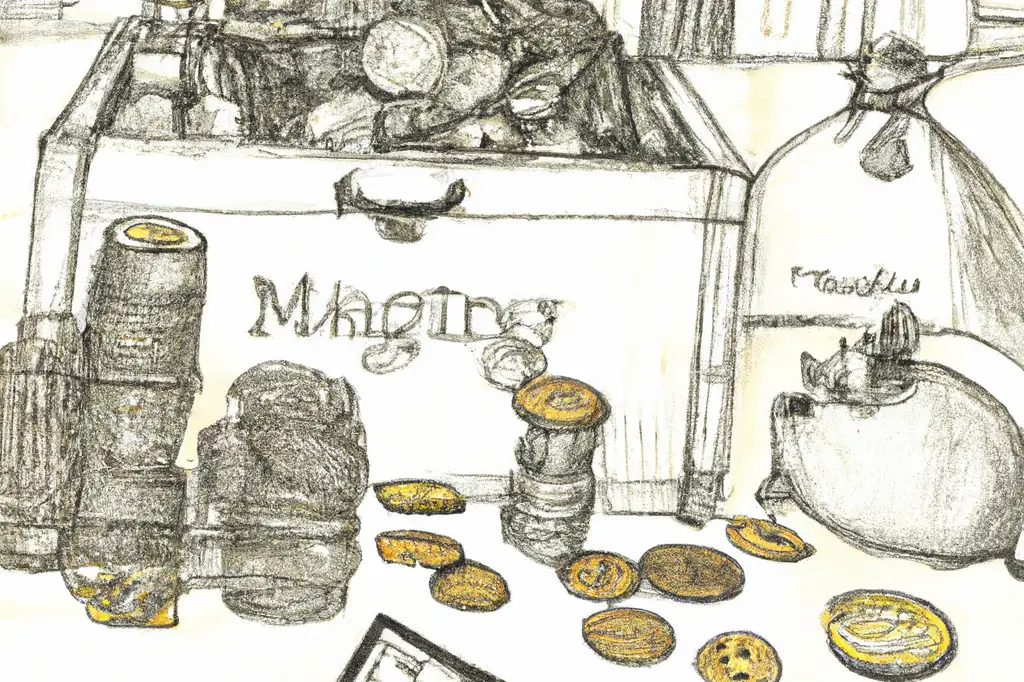Cost Accounting for Manufacturing: Tailored Techniques for the Production Industry
Welcome to our comprehensive guide on cost accounting for the manufacturing industry in the United States. In this article, we will delve into the intricacies of cost accounting and focus on the techniques specifically tailored to the production sector. If you are a manufacturer looking to optimize your cost management and improve your bottom line, you’ve come to the right place. We will equip you with the knowledge and tools necessary to effectively track, analyze, and control costs within your production operations.
The Importance of Cost Accounting in Manufacturing
In the competitive landscape of the manufacturing industry, maintaining profitability is paramount. Cost accounting plays a crucial role in helping manufacturers identify and understand all the costs associated with their production processes. It provides invaluable insights into the true costs of manufacturing products, allowing businesses to make informed decisions regarding pricing, resource allocation, and product profitability.
Effective cost accounting enables manufacturers to:
- Analyze and optimize production costs;
- Determine accurate product costs for pricing and profit calculations;
- Identify cost-saving opportunities;
- Evaluate the performance of departments, processes, and products;
- Facilitate budgeting and forecasting;
- Support decision-making for process improvements and investments;
- Comply with regulatory requirements;
- And more.
Cost Accounting Techniques for Manufacturers
Manufacturers utilize various cost accounting techniques to gain a comprehensive understanding of their expenses and make informed decisions. Let’s explore some of the key techniques commonly used in the production industry:
1. Standard Costing:
– Standard costing involves establishing predetermined standards for various costs such as direct materials, direct labor, and manufacturing overhead. By comparing actual costs to these pre-set standards, manufacturers can identify deviations and take corrective action. Standard costing helps companies set realistic pricing and evaluate the performance of their production processes, enabling efficiency improvements.
2. Activity-Based Costing (ABC):
– ABC focuses on assigning costs to specific activities or processes within the production cycle. Unlike traditional costing methods that allocate costs based on simple proportions, ABC identifies the actual consumption of resources by each activity and allocates costs accordingly. This technique provides a more accurate picture of the costs associated with each product, allowing manufacturers to make more informed decisions regarding pricing and process improvements.
3. Job Order Costing:
– Job order costing is particularly relevant for manufacturers who produce unique and distinct products. It involves tracking the costs associated with each individual job or order, including materials, labor, and overhead costs. This technique enables manufacturers to calculate accurate costs for each job, assess profitability, and evaluate the efficiency of their production processes.
4. Lean Accounting:
– Lean accounting is a cost accounting approach that aligns with the principles of lean manufacturing. It focuses on eliminating waste and improving efficiency in manufacturing operations. The technique incorporates lean concepts such as value stream mapping, just-in-time inventory management, and continuous improvement into the cost accounting process. By adopting lean accounting practices, manufacturers can reduce costs, enhance profitability, and streamline their operations.
Implementing Cost Accounting in Manufacturing
Introducing cost accounting into your manufacturing operations requires careful planning and execution. Here are some key steps to help you implement cost accounting effectively:
1. Identify Cost Drivers:
– Determine the primary factors driving costs within your production processes. This could include raw materials, labor, energy consumption, machine maintenance, or other relevant factors. Identifying cost drivers will enable you to allocate and analyze costs accurately.
2. Choose Suitable Cost Accounting Techniques:
– Analyze the nature of your manufacturing operations and select the cost accounting techniques that best align with your specific needs. Consider factors like the type of products manufactured, production volume, complexity of operations, and the desired level of cost granularity.
3. Establish Standard Costing Systems:
– Set up standard costing systems to define target costs and establish performance benchmarks. Regularly monitor and analyze actual costs against these standards to identify areas for improvement and take corrective action when necessary.
4. Invest in Cost Accounting Software:
– Utilize specialized cost accounting software that can streamline and automate your cost accounting processes. These tools offer features such as real-time cost tracking, variance analysis, detailed reporting, and integration with other systems.
5. Train and Educate Your Team:
– Ensure your employees, particularly those involved in finance and production, receive proper training on cost accounting principles, techniques, and software usage. Equip them with the knowledge and skills needed to effectively contribute to your cost management efforts.
In Conclusion
Effective cost accounting is an essential component of successful manufacturing operations. By implementing tailored cost accounting techniques, manufacturers can gain a clear understanding of their costs, optimize operations, and enhance profitability. Remember, cost accounting is an ongoing process that requires continuous monitoring and adjustment to adapt to changing manufacturing dynamics and market conditions. Apply the techniques and best practices outlined in this article to take control of your manufacturing costs and drive sustainable growth for your business.







